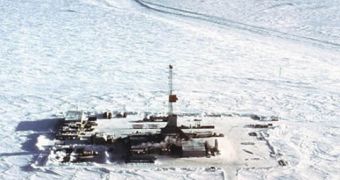In spite of offshore drilling operations posing great threats to marine wildlife, it was recently made public that Shell might begin exploiting the Arctic waters without having any kind of “safety-net” at hand.
More precisely, the Arctic Challenger, the company's oil spill recovery barge, is to remain docked in northern Washington, simply because it failed to meet the criteria required in order to get its Coast Guard Certification.
Think Progress explains that the Coast Guard first and foremost questioned the Arctic Challenger's fire protection system, electrical wiring and piping.
As the same source explains, seeing how Arctic waters are quite tricky and environmental conditions here are unpredictable for most of the time, even a minor flaw in a ship's design can lead to major catastrophes.
Truth be told, as we previously discussed, once the oil resulting from drilling operations hits the waters nearby, not much can be done to clean it up in an efficient manner.
However, the spill can be somewhat contained, provided that one has the necessary equipment.
Luckily, the Federal Bureau of Safety and Environmental Enforcement made it clear that, until Shell makes sure that its oil spill barge is spic-and-span, final drilling permits will not be issued.
This delay can only gladden those who oppose drilling operations in the Arctic, especially given the fact that Shell needed to halt all of its activities in this part of the world by September or November at the latest, due to the arrival of winter.
This means that a quite narrow window of opportunity will remain available for exploiting these icy waters.
From where we stand, it is quite paradoxical that, although Shell took the time to train people in dealing with oil spills in the Arctic region, the company somehow forgot to make sure that the equipment needed for damage control in such situations was properly inspected and ready to use.

 14 DAY TRIAL //
14 DAY TRIAL //